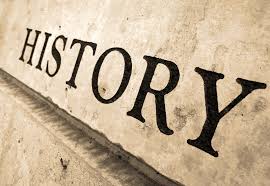Nobel Awards 2011
For Peace: Declaring women’s rights vital for world peace, the Nobel Committee awarded its annual Peace Prize to three indomitable campaigners against war and oppression. Africa’s first freely elected female head of State Ellen Johnson-Sirleaf shares the prize with compatriot Leymah Gbowee, who led a “sex strike” among her efforts against Liberia’s civil war and Arab activist Tawakul Karman, who hailed the award as a victory for democracy in Yemen.
For Literature: Tomas Transtromer, a Swedish poet whose surrealistic works about the mysteries of the human mind won him acclaim as one of the most important Scandinavian writers since World War II. His works have been translated into more than 50 languages and influenced poets around the globe, particularly in North America. Born in Stockholm in 1931, Transtromer started writing poetry while studying at the Sodra Latin school in Stockholm.
For Medicine: American Bruce Beutler and French biologist Jules Hoffmann, who studied the first stages of immune responses to attack, share the award with Canadian-born Ralph Steinman, whose discovery of dendritic cells in the 1970s is key to understanding the body’s next line of defence against disease. Their work has opened up new avenues for the development of prevention and therapy against infections, cancer and inflammatory diseases
For Physics: American Saul Perlmutter shares the award with US-Australian Brian Schmidt and US scientist Adam Riess, for their studies of exploding stars that revealed that the expansion of the universe is accelerating. Working in two separate research teams during the 1990s, Perlmutter in one and Schmidt and Riess in the other, the scientists raced to map the universe’s expansion by analysing a particular type of supernovas, or exploding stars. They found that the light emitted by more than 50 distant supernovas was weaker than expected, a sign that the universe was expanding at an accelerating rate.
For Chemistry: Israeli scientist Daniel Shechtman, for his discovery of quasicrystals, a mosaic-like chemical structure that researchers previously thought was impossible. Shechtman’s discovery in 1982 fundamentally changed the way chemists look at solid matter. Contrary to the previous belief that atoms were packed inside crystals in symmetrical patterns, Shechtman showed that the atoms in a crystal could be packed in a pattern that could not be repeated. Since then, quasicrystals have been produced in laboratories and a Swedish company found them in one of the most durable kinds of steel, which is now used in products such as razor blades and thin needles made specifically for eye surgery.
For Literature: Americans Thomas Sargent and Christopher Sims share the prize for work that helps governments and central banks weigh up responses to crises, though it offers no immediate answer to current global problems.
For Economics: Americans Thomas Sargent and Christopher Sims shared the Nobel prize in economics, for work that helps governments and central banks weigh up responses to crises, though it offers no immediate answer to current global problems.
The economics prize is the only one of the six Nobels that was not originally included in the 1895 will of the creator of the prize, Swedish industrialist Alfred Nobel. It was created by the Swedish central bank, the Riksbank, in 1968, to commemorate its tercentenary and was first handed out in the year 1969.
 New Fund Offering by SBI MF – SBI Dividend Yield Fund
New Fund Offering by SBI MF – SBI Dividend Yield Fund  Bharti Airtel’s 5G user-base expands
Bharti Airtel’s 5G user-base expands  GK TODAY -HISTORY AT A GLANCE
GK TODAY -HISTORY AT A GLANCE